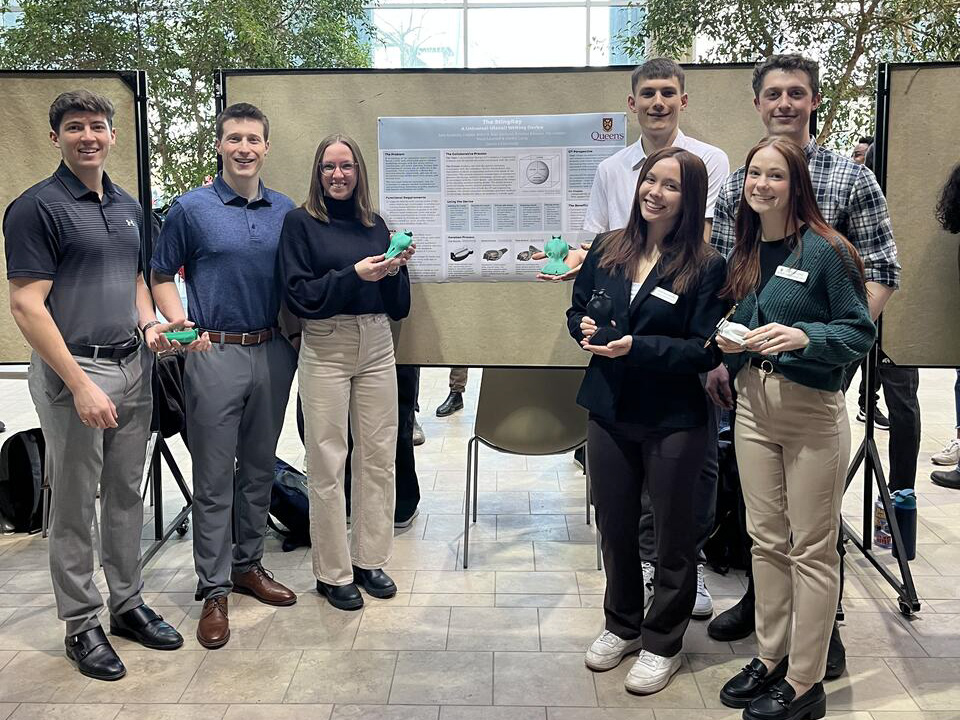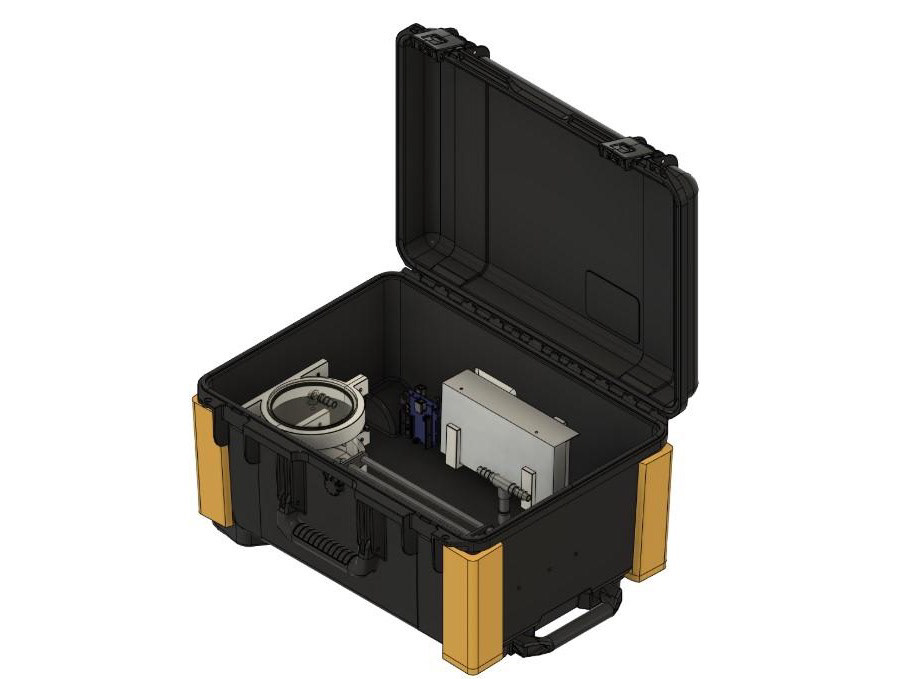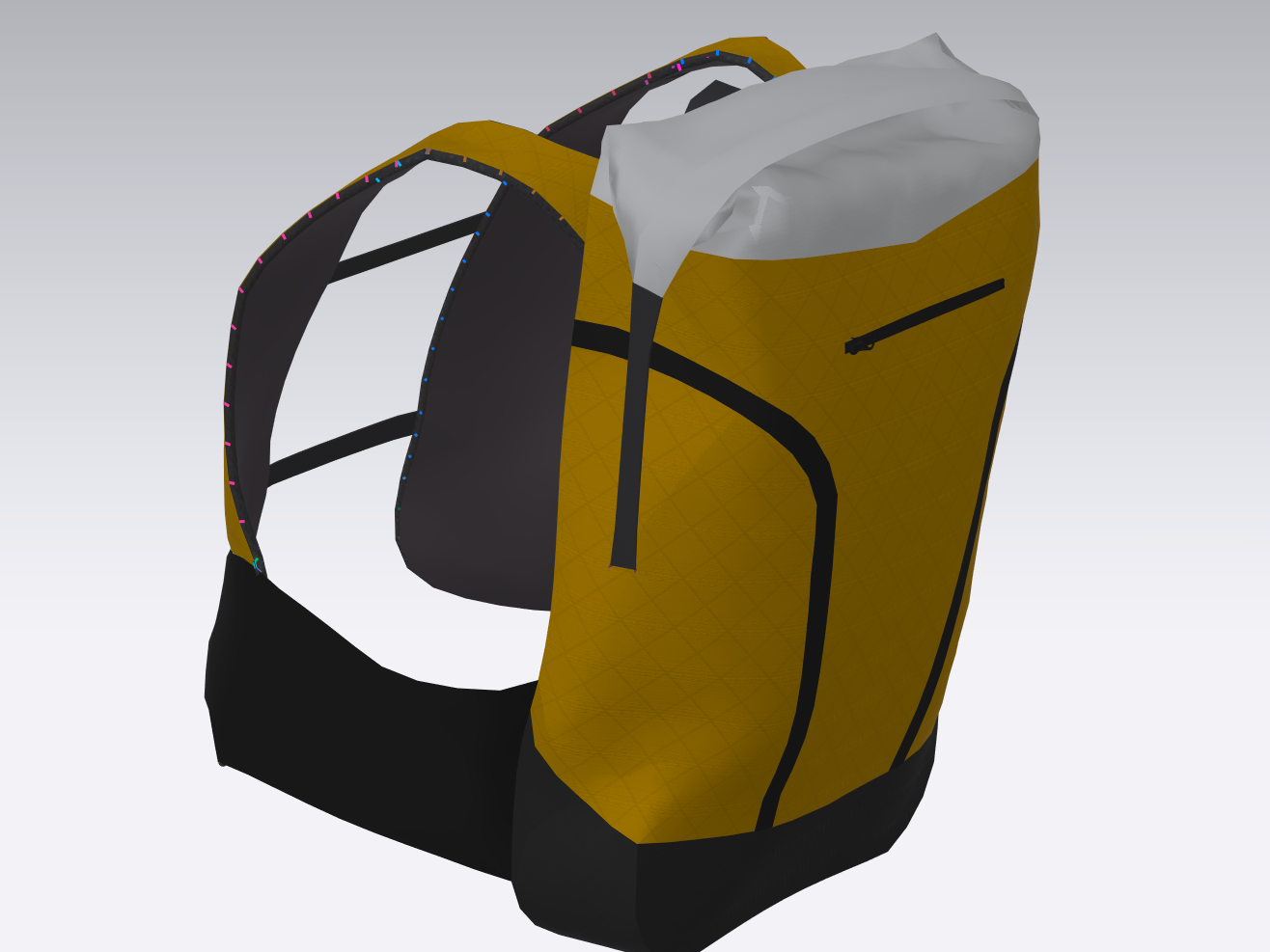Project Highlights:
- Oversaw technical development across 2 major medical device R&D projects and 80+ team members
- Facilitated cross-team alignment, managed technical interdependencies, and led design reviews
- Supported system-level decisions across embedded systems, CAD, DFM, and materials selection
For my final year at Queen’s, I wanted to challenge myself with deeper technical leadership while continuing my involvement with the Queen’s Biomedical Innovation Team (QBiT), a student-run R&D organization focused on developing low-cost, high-impact medical technologies. I stepped into the role of Chief Technical Officer, responsible for overseeing technical development across two ambitious projects, Breasy and KneeFit, while supporting a team of more than eighty members, including ten project managers across eight sub-teams.
Breasy aimed to develop a low-cost, at-home oscillating vest to support respiratory therapy for individuals with cystic fibrosis or COPD. Commercial systems can be cost-prohibitive and are often bulky and difficult to maintain. Our goal was to match clinical performance while significantly reducing cost and complexity. Meanwhile, KneeFit was a first-of-its-kind smart knee brace capable of monitoring rehabilitation progress and dynamically adjusting support and compression in response to real-time user data. The system combined embedded sensors, a custom PCB and firmware, app-based feedback, and ergonomic brace design to create a closed-loop rehab tool.
While project managers and technical teams were focused on detailed subsystem development, ranging from vibration system design and biocompatible materials to app development and embedded systems, I took a step back to ensure technical strategy alignment across the organization. I facilitated weekly meetings between teams to manage interdependencies, helped resolve technical roadblocks, and offered hands-on support in CAD, design-for-manufacturing, and materials selection. I also acted as a bridge between internal teams and external partners including clinicians, engineers, and other experts.
To streamline communication, I consolidated weekly technical updates and delivered them on behalf of the project managers during executive meetings, ensuring clarity and consistency across leadership. I also helped improve internal processes by organizing technical workshops and documentation workflows that made it easier for new members to get up to speed and contribute meaningfully.
Both projects progressed from early concept to working prototype within the academic year and were prepared for continued development. Beyond the technical milestones, we strengthened cross-team collaboration and reduced redundant work by introducing a more structured technical review process.
This role was a rewarding blend of engineering, mentorship, and systems thinking. It gave me the chance to work with a talented, multidisciplinary team, support two projects with meaningful real-world impact, and grow into a more confident and capable technical leader.





